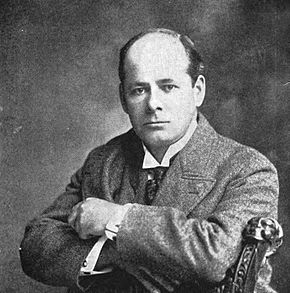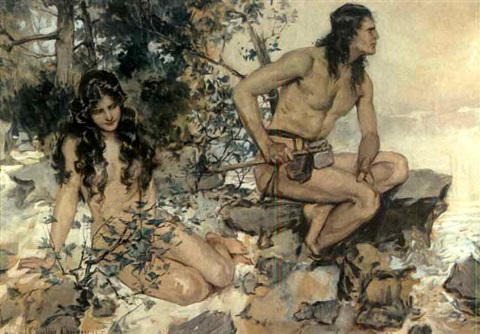 Morgan Andrew Robertson said he had invented the periscope. He had written a story, called The Submarine Destroyer, in 1905, which featured a submarine provided with a telescoping periscope, and called it a periscope, so he claimed he had invented the thing.
Morgan Andrew Robertson said he had invented the periscope. He had written a story, called The Submarine Destroyer, in 1905, which featured a submarine provided with a telescoping periscope, and called it a periscope, so he claimed he had invented the thing.
A former jeweler that had to find another job due to a loss of eyesight, Robertson mostly wrote sea stories, being the son of a Great Lakes captain and having spent ten years in the Merchant Marines (he had ran away from home at the age of 16, in 1877).
He mostly wrote short stories and novellas, that he sold to the story magazines that came before the pulps. He started writing, apparently, after reading some rather bad sea stories and going “What the heck! I can do better than that!”
He never made much money with his writing, but he sort of did better than that.
 In 1898 Robertson wrote a novella, called Futility, and later renamed The Wreck of the Titan: Or, Futility – a story about a supposedly unsinkable ship called Titan that goes down with most hands and passengers, there being not enough lifeboats, after hitting an iceberg in the North Atlantic, on an April night.
In 1898 Robertson wrote a novella, called Futility, and later renamed The Wreck of the Titan: Or, Futility – a story about a supposedly unsinkable ship called Titan that goes down with most hands and passengers, there being not enough lifeboats, after hitting an iceberg in the North Atlantic, on an April night.
A nice bit of “pulp history” and a spectacular case of Jungian synchronicity, considering he got most of the details of the Titanic disaster right, and fourteen years before the event.
Robertson himself did not make much of it…
As to the motif of my story, I merely tried to write a good story with no idea of being a prophet. But, as in other stories of mine, and in the work of other and better writers, coming discoveries and events have been anticipated. I do not doubt that it is because all creative workers get into a hypnoid, telepathic and percipient condition, in which, while apparently awake, they are half asleep, and tap, not only the better informed minds of others but the subliminal realm of unknown facts.
Maybe he was right. But in 1914 he did it again, writing a story about a war between America and Japan, which starts when the Japanese attack without warning the American fleet in Hawaii.
Then he died in 1915, in Atlantic City, from an overdose of paraldehyde, a sedative, granted to induce that state of hypnagogic hallucination he himself mentioned, and to which he was probably addicted.
There are two other stories by Robertson that is worth mentioning, and indeed this post starts with them, as you will see: Three Laws and the Golden Rule (1898) and its prequel Primordial, often reprinted in internal chronological order as a single story.
The plot?
Stop me if you heard this one before…
Two shipwrecked kids, a boy and a girl, grow up alone on an exotic island after being shipwrecked. They grow up, run around naked, fall in love, discover sex…

Had we not just left this party?
Yes, it’s Stacpoole’s The Blue Lagoon all over again, but then years before, and also – by extension – the premise of Pratt’s The Ballad of the Salt Sea.
Some also think both Robertson’s stories and Stacpoole’s novel inspired E.R. Burroughs when he wrote Tarzan – even if, as far as I know, ERB only acknowledged Kipling’s influence.
Weird chap, that Robertson guy.
You can read his Primordial, and Three Laws and the Golden Rule on the ERBzine online page.
Could be a nice warm-up before we get into the first episode of the Big Corto Maltese Reread.
